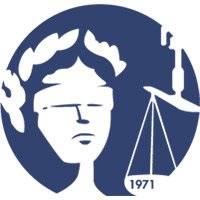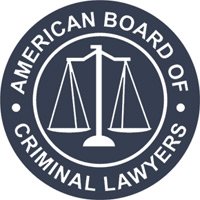Child Pornography
Child pornography is defined as any visual depictions of sexual conduct that involves a child. If an individual is found to be in possession of child pornography, or took part in its production, serious criminal charges can be filed. Texas law also prohibits any person from either selling or transporting this type of pornography.
Never make a statement to any law enforcement officer until after you have retained an experienced criminal defense attorney.
Lawyer for Child Pornography Defense in San Antonio, TX
If you are facing child pornography charges, contact an experienced San Antonio sex crimes defense attorney at Goldstein & Orr. The attorneys understand the sensitivity of the charges, and they will handle your case with the utmost importance. Those accused of sex crimes against children often face a hard battle, but Goldstein & Orr will work to ensure your rights are protected.
The criminal defense attorneys at Goldstein & Orr represent clients charged with child pornography in state and federal court. Goldstein & Orr is located in San Antonio, TX, but the attorneys in the firm have represented clients across the state of Texas in these serious cases.
Call (210) 226-1463 or submit an online form for a free consultation.
Information on Child Porn Charges
- Texas Child Pornography Statute
- Section 43.26(a) – Possession of Child Pornography
- Penalties for Texas Child Porn Charges
- Defenses to Child Pornography
- Federal Child Pornography Statute
- Engaging in Child Exploitation Enterprise
- Federal Penalties for Child Pornography
Texas Child Pornography Statute
Possession of child pornography is a complicated, but very serious sex crime. However, there are several other crimes associated with child pornography, such as producing or distributing the material. All can have serious consequences.
Under Texas law, a person commits the offense of possession of child pornography if he or she knowingly or intentionally possesses visual material depicting a child younger than 18 years of age engaging in sexual conduct. The term “possession” is defined by the Penal Code as “actual care, custody, control or management.”
Additionally, according to Texas Penal Code § 21.15, it is illegal to photograph, videotape, record, broadcast or transmit any visual image of a child without the consent of the child and with the intent to arouse or sexually gratify another person. This could include photographing a videoing a child while in a bathroom or a department store fitting room.
According to Texas Penal Code § 43.25, a person can be charged with sexual performance of a child if he or she employs, authorizes or induces an individual who is under the age of 18 to engage in sexual conduct or sexual performance.
Section 43.26(a) – Possession of Child Pornography
Texas Penal Code section 43.26(a) provides that a person commits the offense of possession of child pornography if:
- the person knowingly or intentionally possesses, or knowingly or intentionally accesses with intent to view, visual material that visually depicts a child younger than 18 years of age at the time the image of the child was made who is engaging in sexual conduct …; and
- the person knows that the material depicts the child as described by Subdivision (1).4
According to section 43.26(b)(2), the term “sexual conduct” has the meaning assigned by Penal Code section 43.25(a)(2), which defines the term as “sexual contact, actual or simulated sexual intercourse, deviate sexual intercourse, sexual bestiality, masturbation, sado-masochistic abuse, or lewd exhibition of the genitals, the anus, or any portion of the female breast below the top of the areola.”
Penalties for Texas Child Porn Charges
Possession of child pornography generally is a third-degree felony that carries a potential prison sentence of between two and 10 years in prison, a $10,000 fine or both. However, the charges could increase depending on the amount possessed.
If a person possesses visual material that contains six or more identical depictions of a child, he or she can be charged with the intent to promote child pornography. This offense is considered a second-degree felony, punishable by between two and 20 years of imprisonment, a fine of up to $10,000 or both.
Improper videoing or photographing a minor is considered a state jail felony and can result in a jail sentence ranging from 180 days to two years, a fine up to $10,000 or both.
Sexual performance of a child generally is considered a second-degree felony, which is punishable by between two to 20 years behind bars, a fine up to $10,000 or both. However, it can be upgraded to a first-degree felony if the victim was under the age of 14 at the time of the offense. A first-degree felony is punishable by between five and 99 years in prison, a fine up to $10,000 or both.
Defenses to Child Pornography
Defenses in these cases often center around whether it is proven that the images depicted children less than 18 years old. The Texas Penal Code does not require expert testimony to determine a child’s age in a possession of child pornography case.
Section 43.25(g) provides that when it becomes necessary for purposes of section 43.26 to determine whether a child who participated in sexual conduct was younger than 18 years of age, the court or jury may make such a determination. The determination can be made by any of the following methods:
- Personal inspection of the child
- Inspection of the photograph or motion picture that shows the child engaging in the sexual performance
- Oral testimony by a witness to the sexual performance as to the age of the child based on the child’s appearance at the time
- Expert medical testimony based on the appearance of the child engaging in the sexual performance
- Any other method authorized by law or by the rules of evidence at common law
Other defenses involve whether the person accused knew he or she possessed child pornography. This defense is particularly important when the images are found in temporary Internet files. The courts in Texas have taken a variety of approaches to determining whether images in a computer’s temporary cache are sufficient to show knowing or intentional possession.
Sufficient evidence often requires a showing that the person actually looked at the images in the cache. Evidence in these cases can include the defendant’s admitted history and practice of viewing child pornography, along with evidence of the defendant’s exercise of control over the images.
For example, expert testimony is often used to establish whether the person accused did things like copied the images to a hard drive, zoomed in on the images, or purposefully deleted images from the computer cache file.
Federal Child Pornography Statute
Child pornography charges are incredibly descriptive in what acts can be considered illegal. The charges could be either state or federal crimes. Federal law prohibits certain activities relating to material constituting or containing child pornography. Under 18 U.S.C. Section 2252A, the following acts could be considered illegal:
- Mailing, transporting or transferring over a computer child pornography
- Receiving or distributing child pornography
- Reproducing child pornography
- Advertising or promoting child pornography through the mail or a computer or selling or possessing with the intent to sell child pornography
- Possessing or knowingly accessing with intent to view any image of child pornography
- Distributing or offering to provide child pornography to a minor
- Knowingly producing with the intent to distribute child pornography that is an adaption or modified depiction of an identifiable minor
Over the years, Congress has passed numerous laws of increasing severity that regulate the exploitation of children and child pornography. Most recently, Congress enacted the Child Protection Act of 2012, which raised the statutory maximum term of imprisonment for possession of child pornography from 10 to 20 years for defendants who possessed images of a prepubescent minor or a minor under 12 years of age.
The federal child pornography statute is worded similarly to the child pornography statute in Texas except that in the federal statute, the word “lascivious” is used instead of “lewd.”
To determine whether depictions of nude children are “lascivious,” “lewd,” or “for the purpose of sexual stimulation of the viewer,” and thus child pornography, several federal courts have relied on the Dost factors announced in United States v. Dost, 636 F.Supp. 828 (S.D. Cal. 1986), aff’d sub nom. United States v. Wiegand, 812 F.2d 1239 (9th Cir. 1987), and aff’d, 813 F.2d 1231 (9th Cir. 1987).
In that case, the defendants were charged under the federal statutes making the production and possession of child pornography unlawful. The issue in Dost was whether the photos constituted “a lascivious exhibition of the genitals or pubic area.” The federal district court listed six factors that may be used to evaluate this issue:
- whether the visual depiction is intended or designed to elicit a sexual response in the viewer;
- whether the visual depiction suggests sexual coyness or a willingness to engage in sexual activity;
- whether the child is fully or partially clothed, or nude;
- whether the child is depicted in an unnatural pose, or in inappropriate attire, considering the age of the child;
- whether the setting of the visual depiction is sexually suggestive, i.e., in a place or pose generally associated with sexual activity; or
- whether the focal point of the visual depiction is on the child’s genitalia or pubic area;
In the Dost decision, the court concluded that all of the photographs depicted a minor engaged in the lascivious exhibition of her genitals or pubic area. Dost, 636 F.Supp. at 832.
Other courts have considered the Dost factors to be useful for assessing the sufficiency of evidence to support a conviction. Although a visual depiction need not involve all of these factors to be a lascivious exhibition of the genitals or pubic area, the factors are used as starting point to determine whether the overall content of the visual depiction.
Engaging in Child Exploitation Enterprise
The Adam Walsh Act created a new federal crime of engaging in a Child Exploitation Enterprise that imposes tough mandatory minimum penalties for the most serious crimes against children, such as sex trafficking of children and child prostitution, according to 18 U.S.C. § 2252A(g). Penalties for CEE carry a mandatory minimum of twenty years in prison and a maximum term of life imprisonment.
Child exploitation enterprise involves a series of felony violations constituting three or more separate incidents and involving more than one victim and commits those offenses in concert with three or more other minors.
The CEE statute requires the government to prove:
- The defendant committed at least three separate predicate offenses that constitute a series of at least three incidents
- More than one underage victim was involved
- At least three others acted “in concert” with the defendant to commit the predicate offenses
Federal Penalties for Child Pornography
The punishment for child pornography charges generally includes imprisonment of not less than five years and not more than 20 years. The term of imprisonment would be not less than 15 years and not more than 40 years if the accused has a prior conviction under state or federal for any of the following:
- Child pornography
- Aggravated sexual abuse
- Sexual abuse
- Sex trafficking
- Sex trafficking children
If a person possesses any image of child pornography involving a prepubescent minor or a minor who had not attained 12 years of age, he or she could be imprisoned for not more than 20 years.
Certain civil penalties also could be applied. Relief can include injunctive relief and money damages, including both compensatory and punitive damages. Relief also can include the costs of the civil action, reasonable attorney fees and the fees for expert witnesses.
Texas Law on Child Pornography from Image Manipulation
Under Texas law, child pornography charges can involve the manipulation of an original image that may not be considered child pornography. In fact, a different and new image can be created from an existing photograph, depending on how the original image is edited, cropped, or manipulated.
For example, “morphing” an image into child pornography occurs when someone “alter[s] innocent pictures of real children so that the children appear to be engaged in sexual activity.” Ashcroft v. Free Speech Coalition, 535 U.S. 234, 241–42, 122 S.Ct. 1389, 152 L.Ed.2d 403 (2002) (noting in dicta that morphed images of real children are “closer to the images in Ferber”).
Likewise, if an image can be edited such that it appears to be a different image, the prosecutor might allege that the newly created image could be considered child pornography even though the original image from which that image was taken is not child pornography. In Alexander v. State, 906 S.W.2d 107, 110 (Tex. App.—Dallas 1995, no pet.), the court found that “whether the content of a photograph constitutes a lewd or lascivious exhibition of a child’s genitals depends on the intent of the photographer.”
Finding a Child Pornography Defense Attorney in Bexar County, TX
The attorneys at Goldstein & Orr represent clients charged with child pornography crimes under both state and federal law. Our offices are located in San Antonio, and we have represented clients throughout the country including in the United States District Court for the Western District of Texas, San Antonio Division.
We also represent clients charged with the unlawful disclosure of intimate material (often called”revenge porn“) in the State of Texas.
Call (210) 226-1463 for a free consultation.











